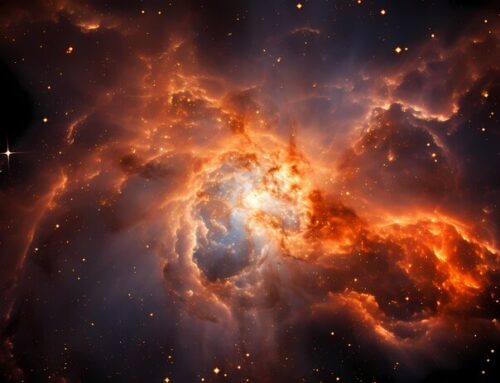The universe is a vast and mysterious expanse filled with countless wonders, but among its most captivating features are the stars. Stars are not just distant points of light in the night sky; they are colossal nuclear furnaces where the fundamental forces of nature shape the very fabric of the cosmos. The term “Stars-923” may not be immediately recognizable among these stellar phenomena. However, for this exploration, we will dive into the concept to represent some of the most fascinating and critical aspects of stellar evolution and cosmic phenomena, bridging the gap between stellar science and our understanding of the universe.
The Birth of Stars: Nebulae and Protostars
To understand a star’s life, we must begin at its birth, deep within vast clouds of gas and dust known as nebulae. These stellar nurseries are the cradles of star formation, where gravity pulls together hydrogen and helium atoms—the basic building blocks of stars—into increasingly dense regions. Over time, these regions collapse under their gravity, heating up as they do so and eventually forming a protostar.
This process is known as gravitational collapse, the first step in a star’s journey. The temperature within the protostar’s core rises as it accumulates more mass, eventually reaching the critical point where nuclear fusion can begin. This fusion marks the birth of a true star, as hydrogen atoms are fused to form helium, releasing enormous amounts of energy.
The newly formed star enters what is known as the “main sequence” phase, where it will spend the majority of its life. During this time, the star is in hydrostatic equilibrium, meaning that the inward pull of gravity is balanced by the outward pressure of the fusion reactions at its core. This balance allows the star to maintain a stable size and luminosity for millions, billions, or even trillions of years, depending on its mass.
The Variety of Stars: A Spectrum of Sizes and Colors
Stars are determined by their initial mass, which determines their size, color, and temperature. The most massive stars are known as O-type stars, which are scorching and blue. These stars burn their fuel at an astonishing rate, often exhausting their hydrogen supply in just a few million years. Despite their short lifespans, O-type stars are among the most luminous objects in the universe, usually outshining entire galaxies.
At the other end of the spectrum are the M-type stars, also known as red dwarfs. These stars are much smaller and more relaxed than O-type stars, with surface temperatures that are only a fraction of those found on more prominent stars. Red dwarfs burn their fuel slowly and efficiently, allowing them to remain on the main sequence for trillions of years—longer than the universe’s current age. Because of their longevity and abundance, red dwarfs are often considered some of the most influential stars in the universe for the study of stellar evolution.
Between these extremes lie stars of various other types, including A-type, F-type, G-type (like our own Sun), and K-type stars. Each type represents a different point on the stellar spectrum, with varying temperatures, luminosities, and lifespans. A star’s color is closely related to its surface temperature, with hotter stars appearing blue or white and cooler stars appearing orange or red.
Stellar Evolution: The Life and Death of Stars
Stars are not static objects; they evolve as they consume nuclear fuel. A star’s fate is determined primarily by its mass, which dictates how it will die and what it will leave behind.
For stars like the Sun, which are of intermediate mass, the end of the main sequence phase occurs when the hydrogen in their cores is exhausted. When this happens, the core contracts under gravity while the outer layers expand, causing the star to become a red giant. During this phase, the star’s outer layers are ejected into space, forming a planetary nebula, while the core collapses. Eventually, the core stabilizes as a dense, hot object known as a white dwarf, which will slowly cool and fade over billions of years.
More massive stars have more dramatic endings. Once they exhaust their nuclear fuel, they undergo a core collapse that triggers an explosion known as a supernova. This explosion can outshine an entire galaxy briefly and is responsible for dispersing heavy elements like iron and gold into space, where they can become part of new stars and planets. The core left behind after a supernova can become either a neutron star or, if the star is massive enough, a black hole.
Neutron stars are incredibly dense objects, with a mass more significant than that of the Sun compressed into a sphere only about 20 kilometers in diameter. These stars can exhibit extreme magnetic fields and rapid rotation, resulting in phenomena such as pulsars, which emit regular pulses of radiation as they spin.
On the other hand, black holes represent the ultimate fate of the most massive stars. These objects are so dense that light cannot escape their gravitational pull, making them invisible to direct observation. However, their presence can be inferred from the behavior of nearby objects and the bending of light around them, known as gravitational lensing.
Stellar Remnants: The Legacy of Stars
The remnants of stars play a crucial role in the ongoing evolution of the universe. The heavy elements produced by stars and dispersed by supernovae contribute to the formation of new stars, planets, and even life. The cosmic recycling of these materials is a fundamental process that shapes the galaxies and everything within them.
White dwarfs, neutron stars, and black holes also significantly impact their environments. White dwarfs can sometimes pull material from a companion star, leading to a type of explosion known as a nova. Neutron stars, with their intense magnetic fields and rapid rotation, can accelerate particles to near-light speeds, creating powerful beams of radiation that sweep across space.
Despite their name, black holes can be some of the most energetic objects in the universe. When material falls into a black hole, it can form an accretion disk that heats to extreme temperatures, emitting X-rays and other high-energy radiation. Some black holes, especially those at the centers of galaxies, can power quasars—among the most luminous objects known, capable of outshining entire galaxies.
Stellar Phenomena: Cosmic Fireworks and Cataclysms
Beyond the lifecycle of individual stars, the cosmos is filled with spectacular stellar phenomena that capture the imagination and challenge our understanding of physics.
One such phenomenon is the gamma-ray burst (GRB), the most powerful explosion known in the universe. GRBs are thought to occur when massive stars collapse into black holes or when neutron stars collide. These events release an immense amount of energy in the form of gamma rays, which can be detected across vast distances. A GRB can release more power in a few seconds than the Sun will emit over its 10-billion-year lifespan.
Another fascinating phenomenon is the magnetar, a neutron star with a powerful magnetic field. Magnetars are responsible for some of the most intense electromagnetic events observed in the universe, including giant flares that can affect Earth’s magnetic field from thousands of light-years away.
Finally, phenomena are associated with the end stages of stellar evolution, such as supernovae and their remnants. Supernovae create neutron stars and black holes and produce spectacular nebulae, like the Crab Nebula, which is the remnant of a supernova observed in 1054 AD. These nebulae are rich in complex structures and are often studied to understand the processes that occur during and after a star’s death.
Stars-923: A Cosmic Perspective
“Stars-923” can symbolize the vast number of stars and stellar phenomena that populate our universe. With billions of stars in our galaxy alone, each a unique and complex system, studying stellar phenomena is both a monumental challenge and a profound opportunity to understand the cosmos.
From the birth of stars in nebulae to their explosive deaths as supernovae, stars are central to the universe’s story. They are the engines that drive cosmic evolution, the creators of the elements that make up planets and life, and the sources of light that illuminate the night sky.
As we continue to explore the universe through telescopes and theoretical models, we are constantly discovering new aspects of these fascinating objects. Whether it’s the detection of exoplanets around distant stars, the observation of gravitational waves from colliding neutron stars, or the study of the cosmic microwave background radiation, each discovery brings us closer to understanding the full story of the stars.
In the end, “Stars-923” is not just a number—it’s a gateway to the cosmos’ infinite possibilities. It reminds us that no matter how much we learn, there will always be more to discover, explore, and marvel at in the vast, star-filled universe.




